
Roots
In the quiet corners of ancient African homesteads, beneath the gentle sun or the glow of communal fires, something profound often took shape upon the head. It was more than a mere arrangement of hair; it was a living chronicle, a declaration spoken without sound. The strands, carefully gathered and sculpted, held stories of who a person was, where they stood in the world, and the very lineage that coursed through their being. This artistry, passed from elder hands to younger, served as a fundamental register, a visible marker of identity within vibrant societies.
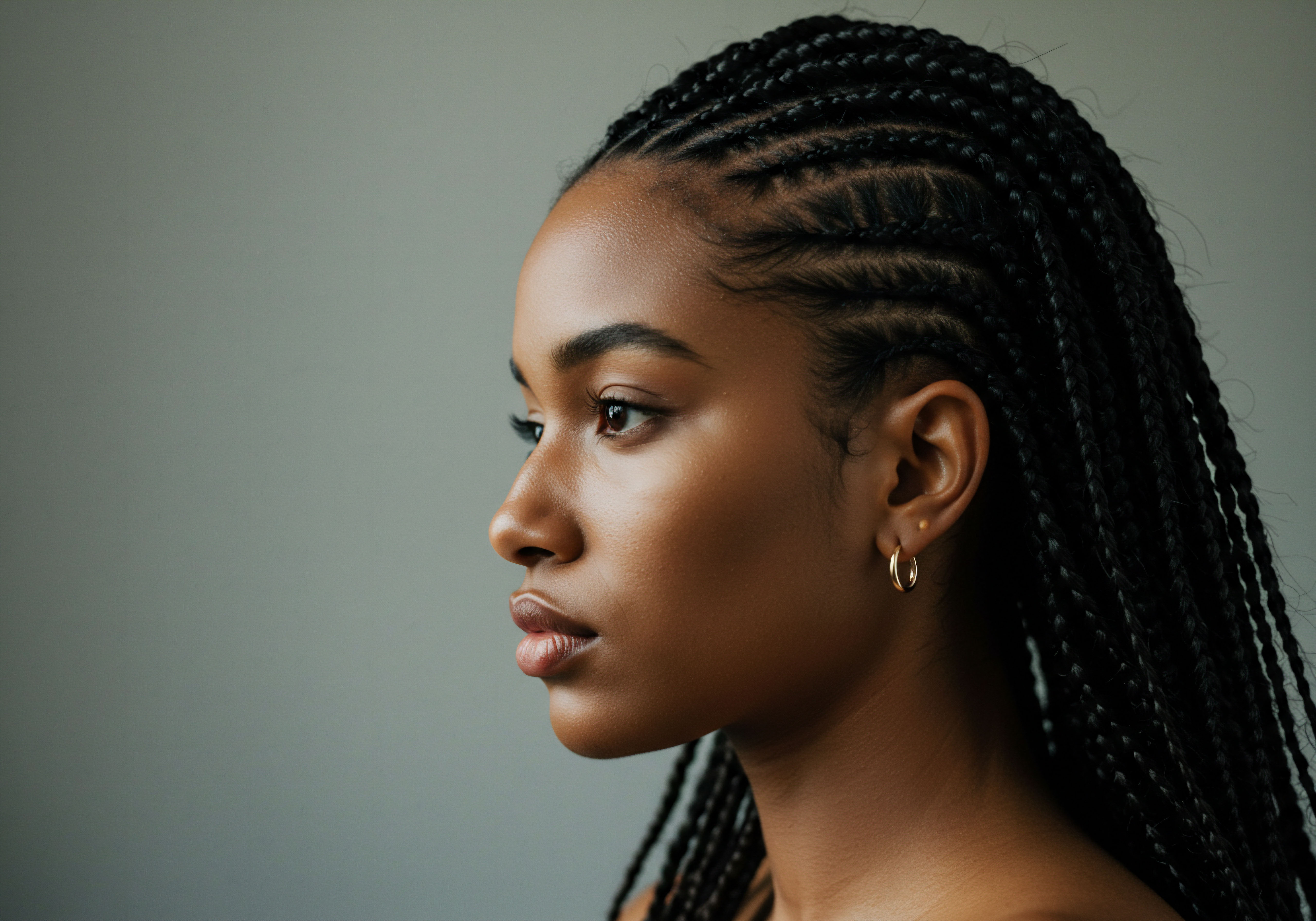
Hair as a Personal Chronicle
Across diverse ancient African cultures, hair was seldom viewed as simply an aesthetic feature. It carried immense weight, acting as a personal record. The styles adopted could convey a wealth of personal details, visible to all who understood the silent language of the community. A person’s age, for instance, might be clearly expressed through specific braided patterns or the way hair was styled.
Young children often wore distinct, sometimes partially shaved, patterns that set them apart, marking their early stages of life. As individuals matured, their hairstyles would evolve, signifying transitions into adolescence, then adulthood, each phase bearing its own unique follicular expression. For women, marital status was frequently communicated through their coiffure. A single woman might wear her hair in one fashion, while a married woman, or a new mother, would present hers in another, often more elaborate or covered, signifying her new role and responsibilities within the family unit. This practice allowed for immediate recognition and understanding of an individual’s place in the social fabric, a quick visual cue in a world without written identity cards.
Braids served as a living language, a visible code that spoke volumes about an individual’s place and story within their community.
Beyond personal markers, the chosen hair design could also denote one’s occupation or even their wealth. Those of high social standing, royalty, or community leaders often sported particularly elaborate or time-consuming styles, adorned with precious materials like gold, beads, cowrie shells, or even plant fibers. These adornments were not merely decorative; they were extensions of the message the hair conveyed, highlighting status and prosperity. For example, in ancient Egypt, elaborate wigs and braided styles decorated with gold and beads symbolized wealth and a connection to divine power.
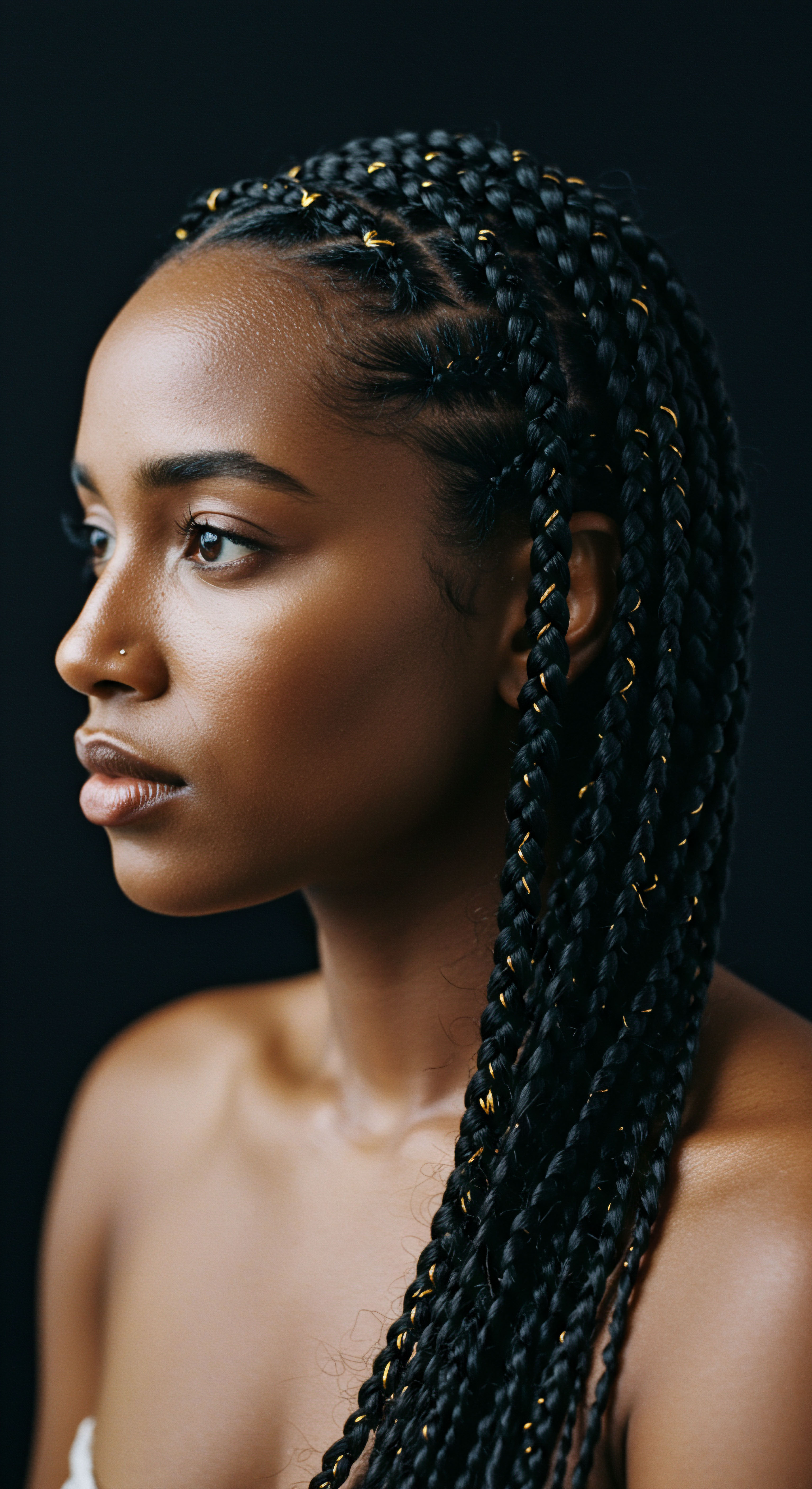
Societal Markers and Group Affiliation
The patterns sculpted into hair extended beyond individual identity, serving as powerful symbols of group belonging. Tribal affiliation, for instance, was often identifiable through specific braiding techniques, partings, or overall hair shapes unique to an ethnic group. The Fulani people, renowned for their delicate, thin braids often adorned with shells, offer a compelling illustration of this communal identification.
The Himba tribe, with their distinctive dreadlocked styles coated in red ochre paste, similarly showcased their connection to the earth and their ancestral heritage through their hair. These stylistic differences allowed members of one group to readily distinguish themselves from others, fostering a strong sense of collective identity and solidarity.
The practice of hair styling also served as a means to express social hierarchy. Different social strata within a community might have specific hairstyles reserved for them, indicating their rank or role. Warriors, chiefs, and elders, for example, frequently wore distinct styles that communicated their authority and position.
This social mapping, etched onto the scalp, was a dynamic system, reflecting shifts in status or significant life events. The Wolof men, in preparation for war, would adopt a specific braided style, signaling their readiness and their role as protectors.
| Symbolic Category Identity |
| Meaning Conveyed Age, marital status, occupation, wealth, social rank |
| Symbolic Category Affiliation |
| Meaning Conveyed Tribal belonging, family lineage, community role |
| Symbolic Category Spiritual |
| Meaning Conveyed Connection to divine, ancestral ties, protection from harm |
| Symbolic Category Status |
| Meaning Conveyed Leadership, royalty, warrior class, social standing |
| Symbolic Category These categories highlight the depth of meaning embedded in ancient African braiding. |

The Silent Language of Lineage
Perhaps one of the most poignant aspects of ancient African hair practices was their role in preserving lineage and historical memory. The act of braiding was not merely a technical skill; it was a ritual of transmission. Mothers, grandmothers, and elder women would gather the younger generations, and as their fingers worked through the hair, they would share stories, proverbs, and historical accounts. This communal activity served as a living archive, ensuring that cultural knowledge, family histories, and community values were passed down through generations.
The specific patterns themselves often held ancestral significance, representing the historical path of a family or a clan. A particular braid might be a family signature, a visual echo of those who came before. This profound connection meant that to wear one’s hair in a traditional style was to carry a piece of history, to honor one’s ancestors, and to declare a belonging to a continuous stream of heritage. The very process of creation, often lasting hours, became a space for intergenerational bonding, a time when wisdom flowed as freely as conversation, strengthening social connections and cultural roots.

Ritual
As we move from the foundational meanings held within ancient African hair to its application, a deeper appreciation for the ritualistic elements comes into focus. The styling of hair, particularly braiding, was seldom a casual affair. Instead, it unfolded as a deliberate, often ceremonial practice, imbued with spiritual weight and social purpose. This section explores how these practices were integrated into the daily rhythms and significant milestones of life, reflecting a profound respect for the hair as a sacred extension of the self.
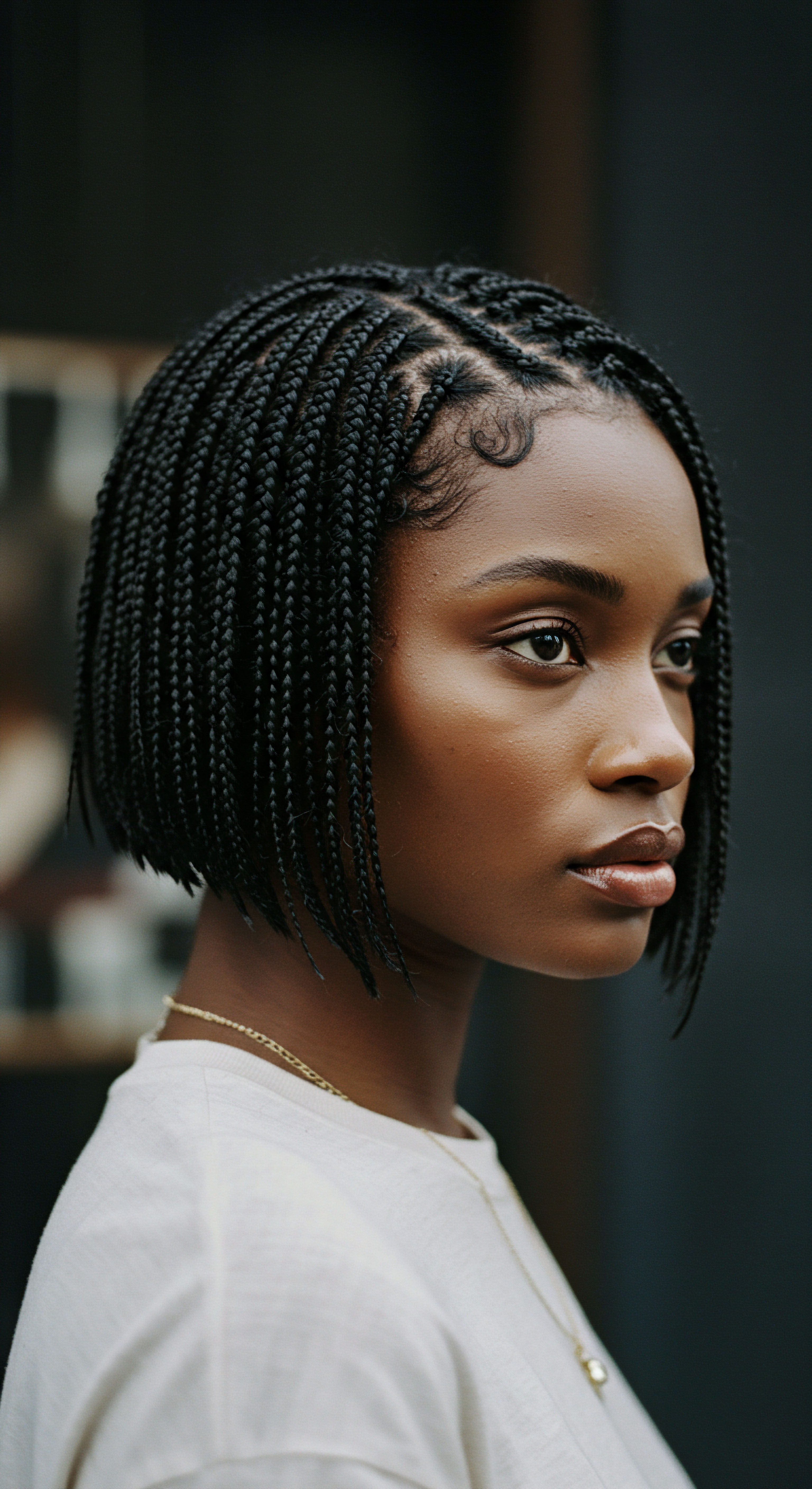
Sacred Crowns and Spiritual Energy
In many ancient African societies, the head was considered the most elevated part of the body, a conduit for spiritual energy and a direct link to the divine. This belief rendered hair a sacred element, not just a personal attribute but a communal asset connecting individuals to their ancestors and the spirit world. Consequently, the act of styling hair became a spiritual practice in itself, often performed by respected elders or skilled practitioners who understood its deeper significance.
Specific braided styles were believed to offer protection from malevolent forces or to invite blessings. For instance, some cultures believed that certain hairstyles could ward off evil spirits, while others saw particular patterns as a means to send messages to deities. The Yoruba people, who considered hair the most elevated part of the body, often used braided styles to communicate with their gods.
The Maasai, in East Africa, incorporated hair shaving and regrowth into their initiation ceremonies, signifying a new stage of life and a reaffirmation of spiritual connection. These practices underscore the belief that hair was a living, spiritual entity, capable of influencing an individual’s well-being and their connection to the unseen realms.
Hair, particularly the head, was considered a spiritual entry point, making its styling a sacred act connecting individuals to their divine heritage.
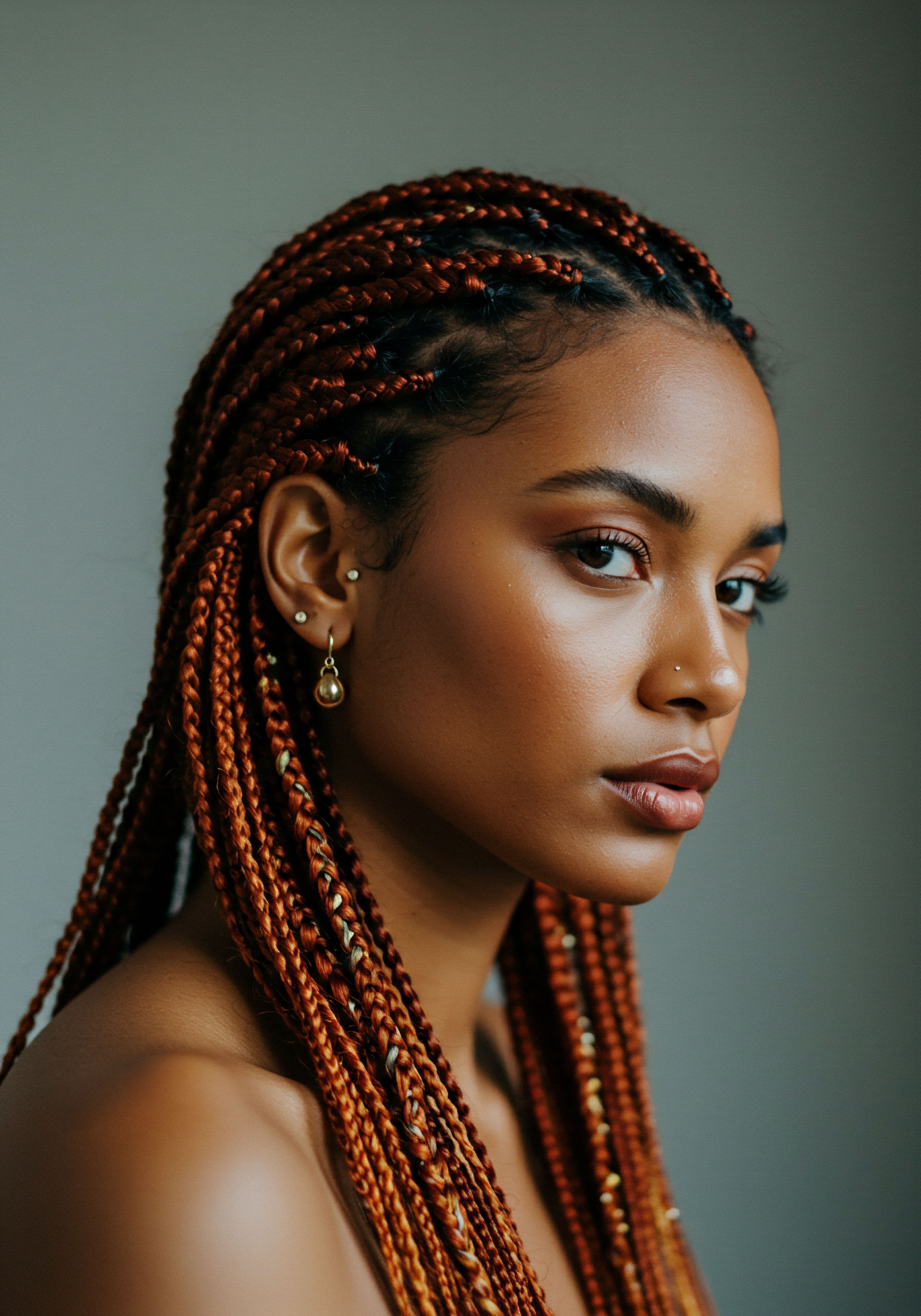
Communal Hands, Shared Wisdom
The creation of braided styles was often a profoundly communal activity, a social ritual that transcended mere grooming. It was a time for women, and sometimes men, to gather, share stories, gossip, and offer advice. These sessions strengthened social bonds, serving as informal classrooms where cultural knowledge and life lessons were passed down through generations. The rhythmic movements of braiding, the quiet conversation, and the shared space created an environment of intimacy and solidarity.
The care of hair itself was seen as a gesture of affection and respect. Children would often sit between the knees of their mothers or grandmothers for hours, undergoing the meticulous process of braiding. This physical closeness, coupled with the oral histories exchanged, forged powerful connections that extended beyond immediate family.
It reinforced community cohesion, where the well-being of an individual’s hair was seen as a reflection of the collective care and attention given to them. This communal aspect continues to resonate in many African and diaspora communities today, where hair salons and braiding sessions remain vibrant hubs of social interaction and cultural continuity.
Consider the Yoruba tradition where skilled braiders held positions of respect within society, their craft seen as an extension of their community role. The artistry involved, the time dedicated, and the shared experience transformed hair care into a ceremonial act, reflecting deep-seated values of interconnectedness and mutual support.
- Ceremonial Hair Preparation ❉ The washing, oiling, and detangling of hair were often preparatory steps for significant events, setting the stage for the spiritual and social meanings to be imbued.
- Adornment with Purpose ❉ Beads, shells, and other natural elements were not merely decorative; they held specific meanings, acting as talismans or symbols of status, further elevating the ritualistic aspect of the hairstyle.
- Intergenerational Transfer ❉ The act of braiding itself was a ritualized transmission of cultural heritage, with elders passing down techniques and oral traditions to younger generations.
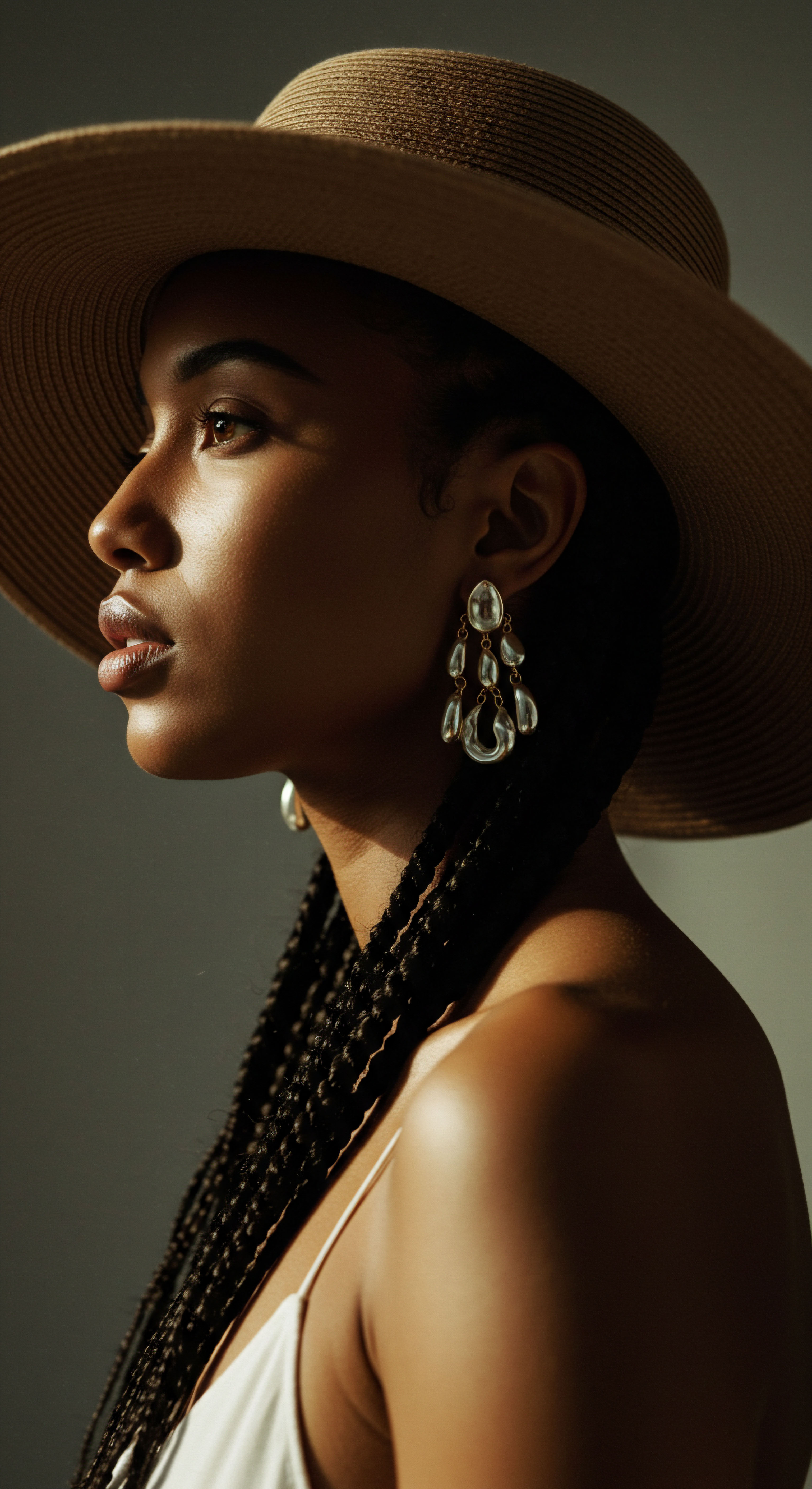
Passages Marked in Strands
Braids served as powerful markers in rites of passage, signaling significant life transitions. From birth to adulthood, marriage to mourning, specific hairstyles were adopted to publicly announce an individual’s new status. For young girls, the first cornrows or elaborate braided styles could signify their transition from childhood to womanhood, a public acknowledgment of their readiness for new responsibilities.
In certain communities, hairstyles might be altered during periods of mourning, indicating grief and a temporary withdrawal from social engagement. Conversely, during celebrations like weddings, brides would wear exceptionally elaborate and beautiful braided styles, symbolizing their new union and their hopes for fertility and prosperity. These transformations in hair were not just external changes; they were outward manifestations of internal shifts, acknowledged and celebrated by the entire community. The visible alteration of hair allowed everyone to participate in and recognize the individual’s journey through life’s milestones.
| Life Event Birth |
| Symbolic Hair Practice Partial head shaving, protective clusters for fontanelles |
| Life Event Initiation to Adulthood |
| Symbolic Hair Practice Specific elaborate styles, often indicating readiness for marriage or warrior status |
| Life Event Marriage |
| Symbolic Hair Practice Ornate, adorned braids symbolizing union, fertility, and new family role |
| Life Event Mourning |
| Symbolic Hair Practice Unkempt or subdued styles, signifying grief and detachment |
| Life Event These practices underscore the deep integration of hair into life's most significant moments. |
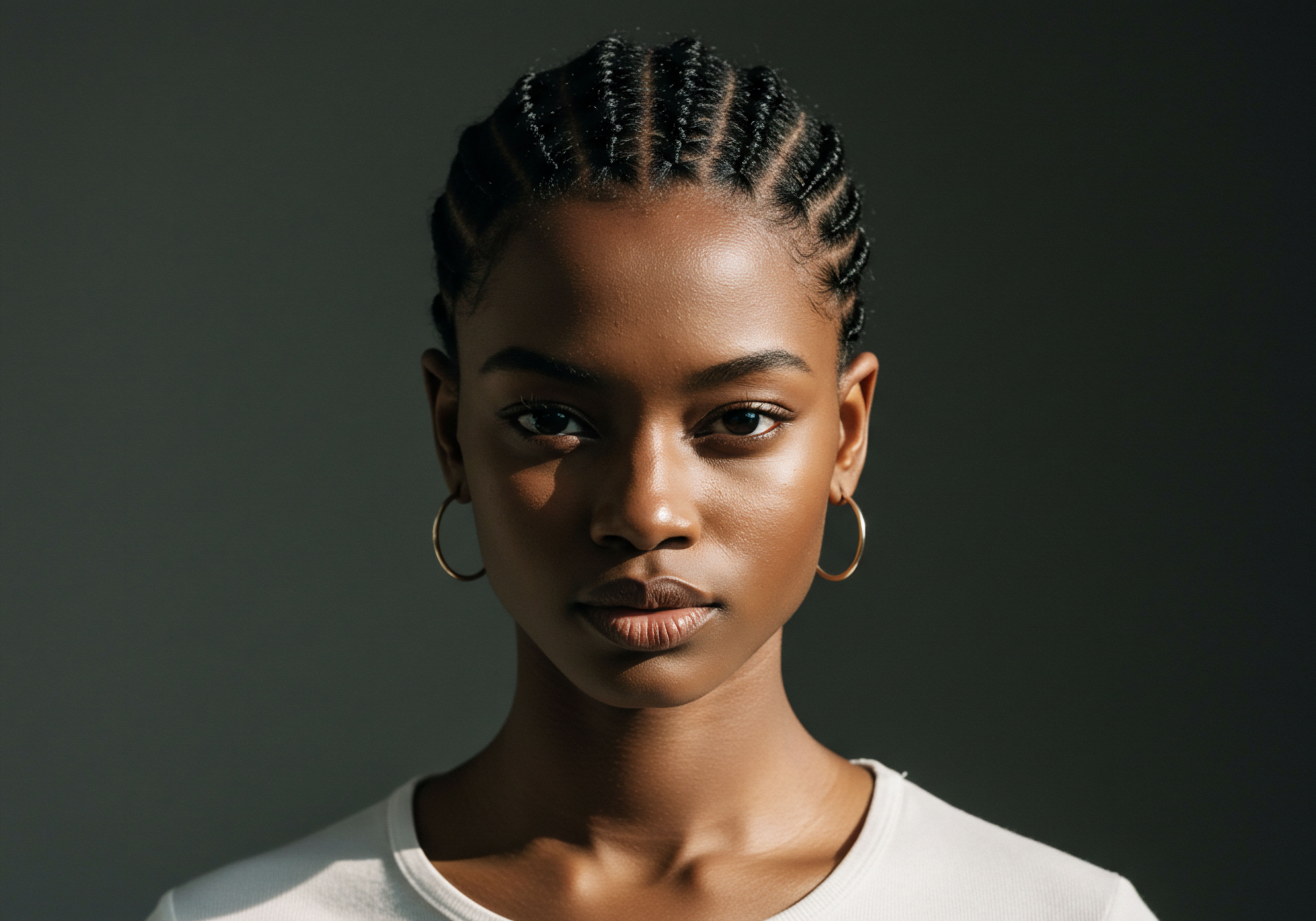
Relay
Stepping further into the intricate world of ancient African braiding reveals dimensions far beyond personal identity or ceremonial observance. These hairstyles, in their very structure and the stories they told, became sophisticated vehicles for communication, political expression, and even acts of profound resistance. This realm of meaning speaks to the ingenuity and resilience of societies that utilized every available medium to convey critical information and preserve their spirit against adversity. Here, we encounter the subtle yet powerful ways hair communicated truths that could not be spoken aloud.
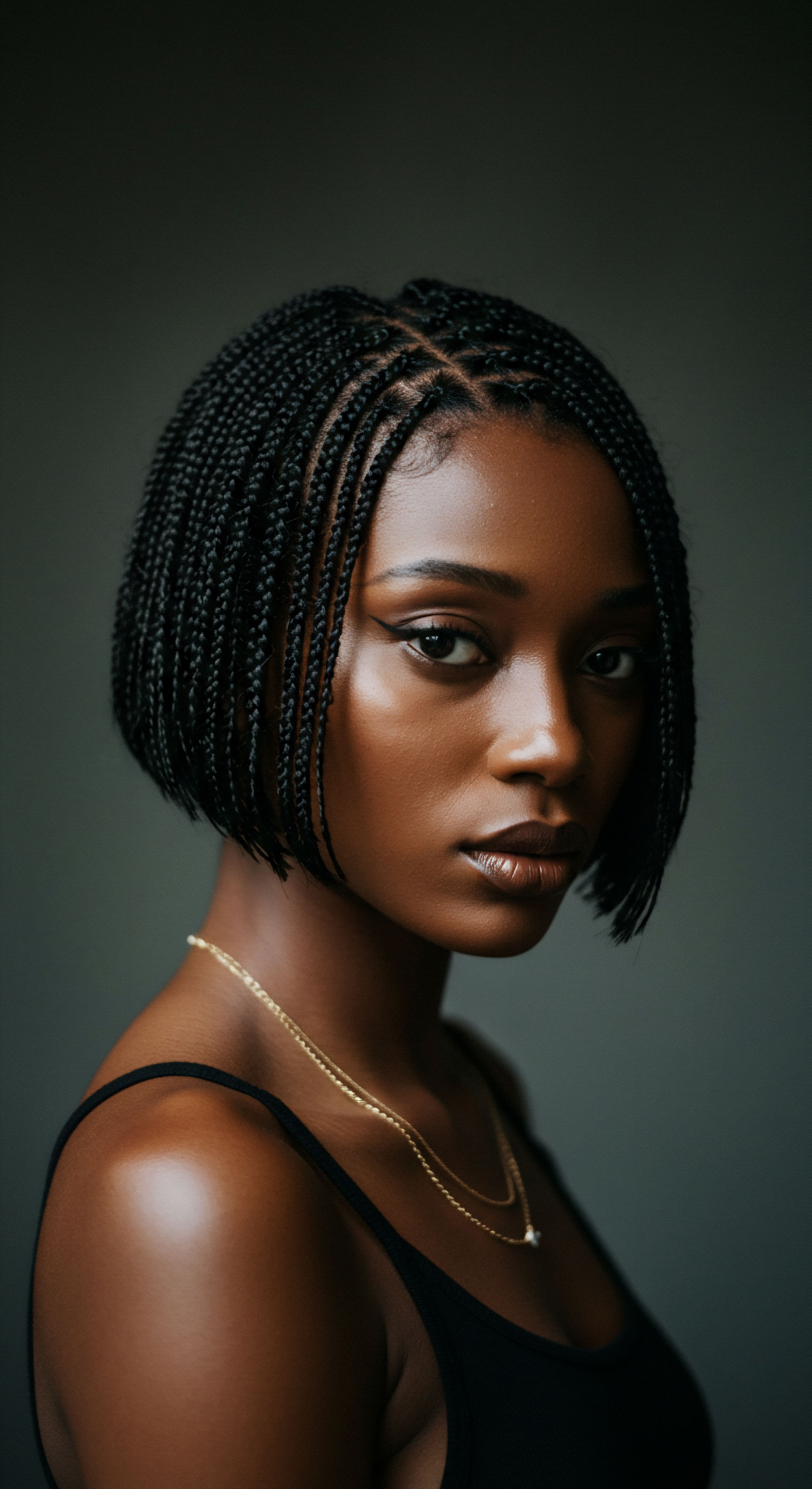
Coded Messages and Acts of Defiance
Perhaps one of the most compelling aspects of braids in ancient African societies, particularly during periods of oppression, was their function as a clandestine communication system. During the transatlantic slave trade and subsequent colonial eras, when direct speech could lead to severe repercussions, hair became a silent, yet potent, medium for conveying hidden messages. This ingenious adaptation allowed enslaved Africans to share vital information right under the noses of their captors.
Consider the extraordinary instance of cornrows being used to conceal maps for escape routes in Colombia. In the early 17th century, in places like Palenque de San Basilio, a village established by escaped slaves, women would meticulously braid patterns into their hair that mimicked the roads, trails, and geographical features of the surrounding terrain. These patterns, sometimes thick braids tied into buns on top (known as ‘departes’), signaled plans for escape, or even where to find water and safe havens.
Small seeds, gold nuggets, or even weapons were sometimes hidden within the braids, providing sustenance and tools for survival once freedom was attained. This practice, while lacking extensive archival evidence due to its very nature as a covert act, is strongly supported by the oral histories maintained by Afro-Colombian communities, demonstrating a profound cultural continuity and a testament to human spirit.
Braids transformed into maps, carrying hidden routes to freedom, a silent testament to the ingenuity of the human spirit under duress.
This historical use of hair as a tool for resistance extended beyond physical escape. During the Mau Mau Rebellion in Kenya (1952-1960), a movement against British colonial rule, some African men and women deliberately grew their hair into dreadlocks. This act was a direct defiance of colonial authorities who often enforced European beauty standards and sought to suppress African cultural expressions. The choice to wear natural, traditional styles became a powerful political statement, a visible assertion of identity and sovereignty in the face of attempts to strip away cultural heritage.
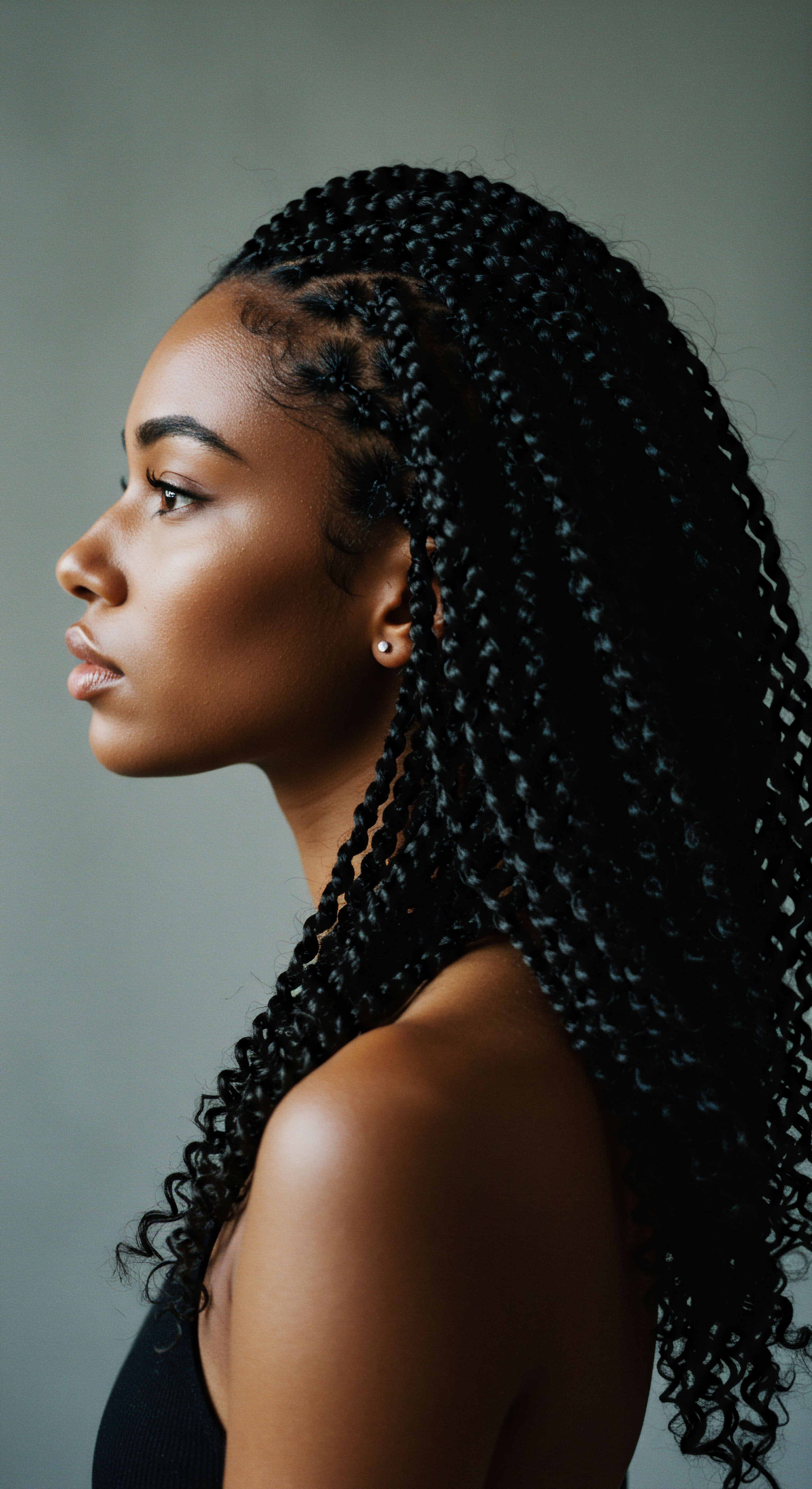
Echoes Through Time ❉ How Does Ancient Hair Symbolism Resonate Today?
The meanings embedded in ancient African braiding practices did not simply vanish with the passage of time or the onset of colonial suppression. Instead, they adapted, survived, and continue to echo in contemporary textured hair expressions. The very act of choosing to wear natural hair, including braids, in modern contexts often carries a powerful legacy of cultural pride and resistance against Eurocentric beauty standards.
The communal aspect of hair care, so central to ancient societies, persists in many forms. Salons and home braiding sessions remain spaces for bonding, storytelling, and the sharing of cultural knowledge. The visual language of braids, while perhaps not conveying specific marital status in the same way, still speaks volumes about identity, personal style, and a connection to heritage. This enduring continuity underscores the resilience of African cultures and the profound significance of hair as a marker of identity that transcends generations and geographies.
- Cultural Continuity ❉ Modern braided styles, like box braids or cornrows, often pay homage to ancient patterns, acting as a visible link to ancestral practices and traditions.
- Personal Expression ❉ While rooted in history, contemporary braids also allow for unique personal expression, blending traditional aesthetics with modern creativity.
- Political Statement ❉ The choice to wear natural hair, including braids, can serve as a statement against historical and ongoing discrimination based on hair texture, upholding Black identity and beauty.

The Science of Textured Beauty ❉ What Can Hair Anatomy Tell Us About Ancient Styling Practices?
Beyond cultural and historical lenses, the very anatomy and characteristics of textured hair shed light on why braiding became such a prominent and meaningful practice in ancient African societies. Afro-textured hair, with its unique tightly coiled strands and curved follicle structure, possesses distinct properties that make braiding not only aesthetically pleasing but also highly practical and protective.
The natural curl pattern of textured hair makes it prone to tangling and breakage if not carefully managed. Braiding, by securing the hair in cohesive units, minimizes friction and manipulation, thereby reducing breakage and promoting length retention. This inherent protective quality would have been immensely valuable in ancient climates, safeguarding the hair from environmental elements like sun and dust, and reducing the need for constant daily manipulation.
Furthermore, the dense appearance of afro-textured hair, a result of its unique structure, allowed for the creation of intricate, raised patterns that could hold their shape for extended periods. This characteristic made hair an ideal canvas for the complex designs that conveyed social messages, status, and even hidden maps. The knowledge of how to work with and care for textured hair, passed down through generations of braiders, was an applied science, an understanding of hair’s capabilities and resilience long before modern trichology. This practical wisdom, combined with the cultural and spiritual significance, solidified braiding’s place as a cornerstone of ancient African societies.
| Hair Attribute Coiled Structure |
| Benefit for Braiding Allows for tight, lasting hold of braided patterns, reducing slippage. |
| Hair Attribute Natural Volume |
| Benefit for Braiding Provides a substantial base for creating bold, visible designs and intricate forms. |
| Hair Attribute Durability when Coiled |
| Benefit for Braiding Minimizes breakage from daily manipulation, acting as a protective style. |
| Hair Attribute Moisture Retention |
| Benefit for Braiding Braids help seal in moisture, a vital aspect for hair health in diverse climates. |
| Hair Attribute The inherent properties of textured hair naturally lend themselves to the art of braiding. |

Reflection
The enduring legacy of braids in ancient African societies serves as a profound reminder that beauty, identity, and cultural expression are deeply intertwined. The careful sectioning, the rhythmic movements, the purposeful patterns—all speak to a heritage where hair was not merely an accessory but a powerful communicator, a sacred conduit, and a testament to resilience. As we look upon these historical practices, we gain a richer appreciation for the ingenuity and depth of human connection that transcends time, finding echoes in every textured strand today. The stories held within these historical coiffures invite us to consider the unspoken narratives that continue to shape identity and belonging across generations.
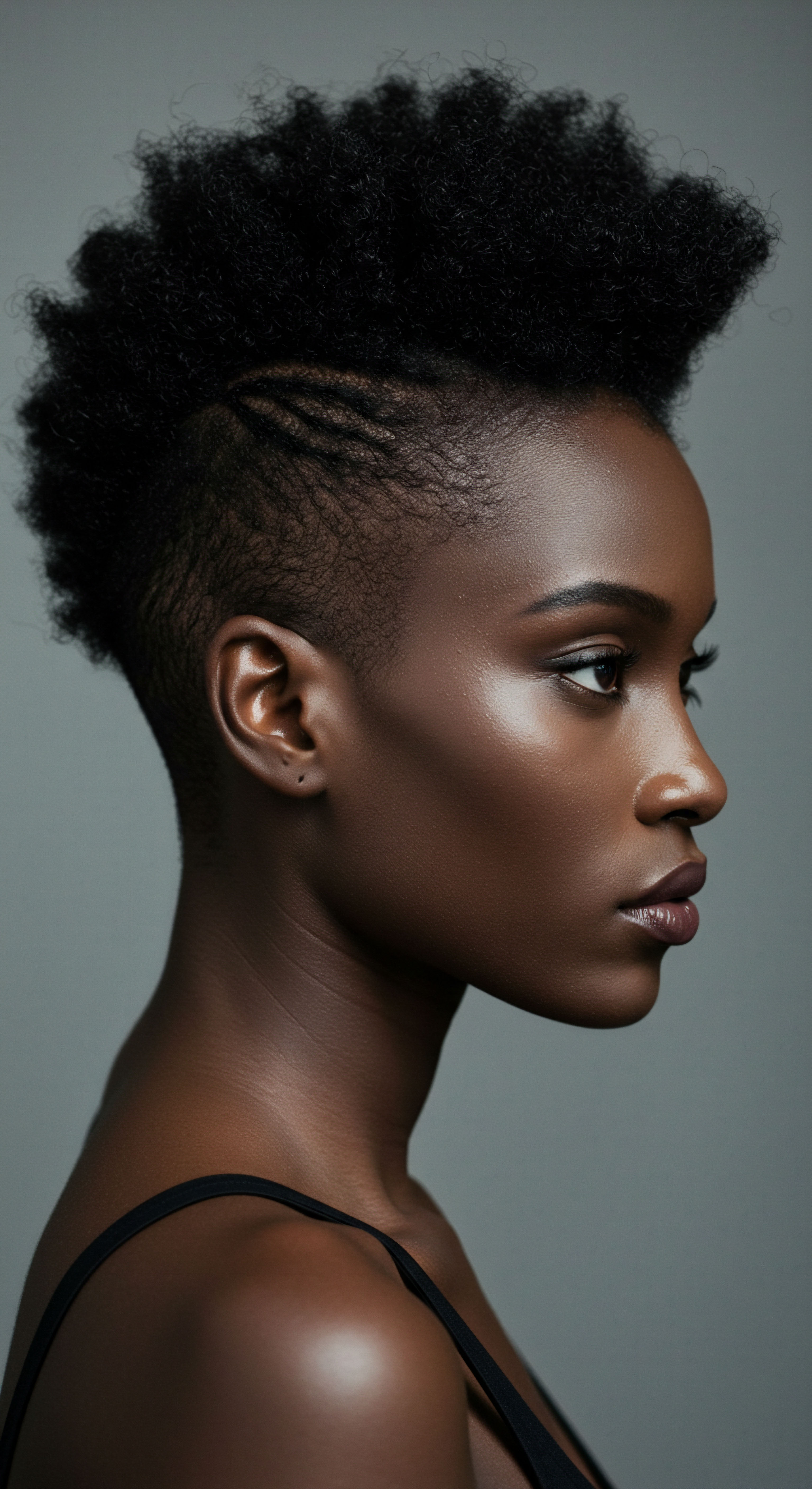
References
- Byrd, Ayana, and Lori L. Tharps. Hair Story ❉ Untangling the Roots of Black Hair in America. St. Martin’s Press, 2001.
- Dabiri, Emma. Twisted ❉ The Tangled History of Black Hair Culture. Harper Perennial, 2019.
- Gordon, Mark. “Gender and Hair Politics ❉ An African Philosophical Analysis.” Journal of Pan African Studies, vol. 11, no. 8, 2018.
- Johnson, Shirley A. and T. Bankhead. “The importance of hair in the identity of Black people.” Nouvelles pratiques sociales, vol. 26, no. 2, 2014, pp. 64-86.
- Omotoso, Sharon Adetutu. “Gender and Hair Politics ❉ An African Philosophical Analysis.” Journal of Pan African Studies, vol. 11, no. 8, 2018.
- Rooks, Noliwe M. Hair Raising ❉ Beauty, Culture, and African American Women. Rutgers University Press, 1996.
- Siebler, Michael, and Frank Herreman. Hair in African Art and Culture. Museum for African Art, 2000.
- Tharps, Lori L. “Hair Story ❉ Untangling the Roots of Black Hair in America.” Amaka Studio, 2023.
- Tshiki, Nonkoliso Andiswa. “African Hairstyles – The “Dreaded” Colonial Legacy.” The Gale Review, 2021.
- Vargas, Lina. Poetics of the Afro-Colombian Hairstyle. 2020.
- Eglash, Ron. African Fractals ❉ Modern Computing and Indigenous Design. Rutgers University Press, 1999.